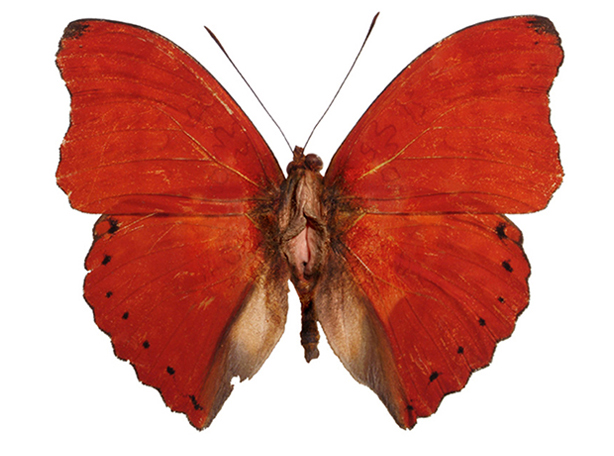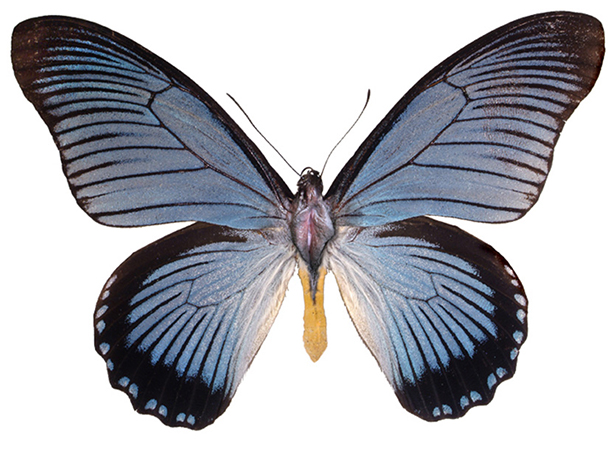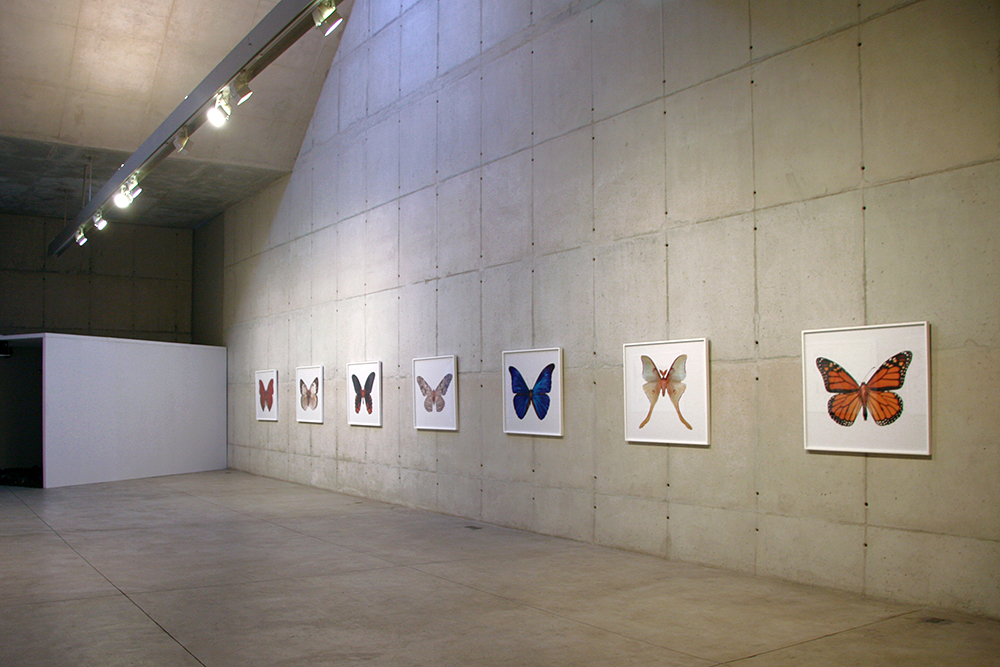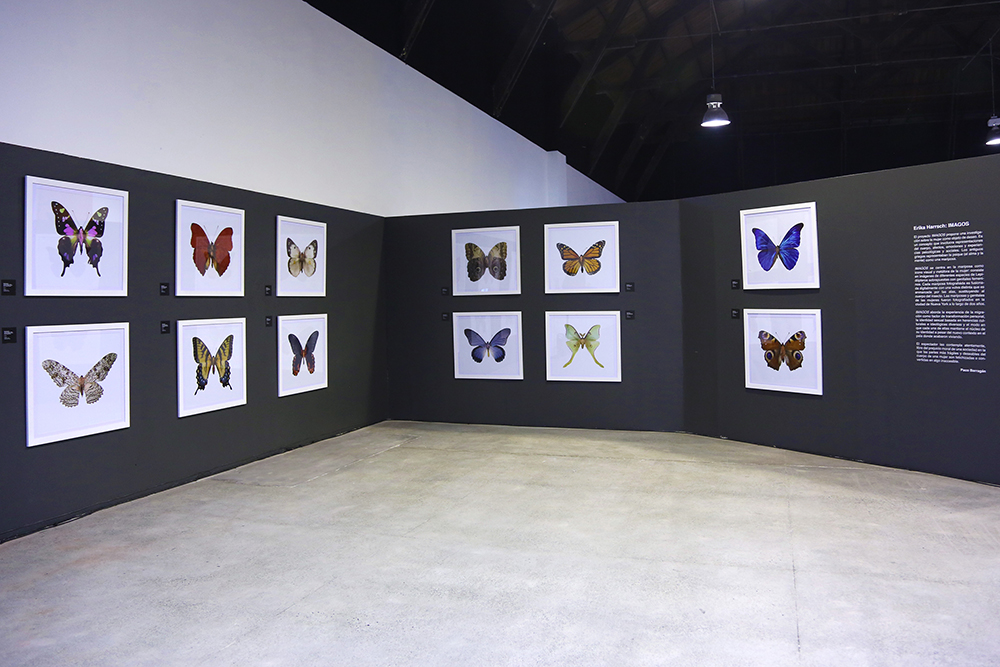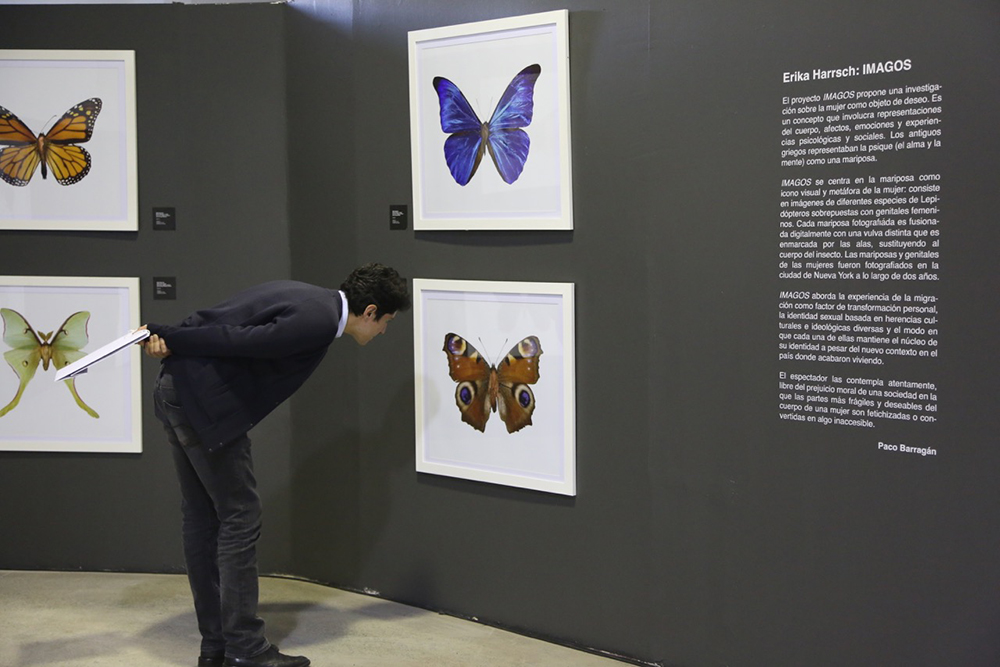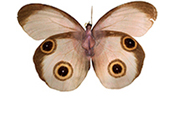
Taenaris Artemis
Country of origin México, 2005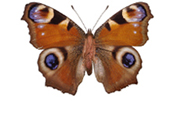
Inachis io
Country of origin Italy, 2005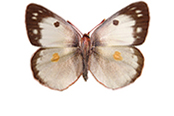
Colias philodice
Country of origin USA, 2005
Danaus plexippus
Country of origin Mexico, 2005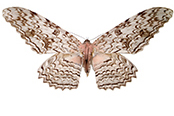
Thysania agrippina
Country of origin Mexico, 2005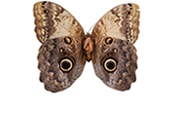
Caligo memnon
Country of origin Argentina, 2005
Morpho rethenor
Country of origin Brazil, 2005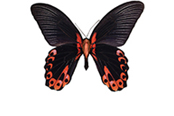
Papilio rumanzovia
Country of origin Malaysia, 2005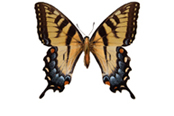
Pterourus glaucus
Country of origin USA, 2005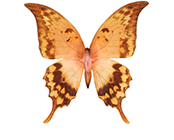
Meandrusa payeni
Country of origin Thailand, 2005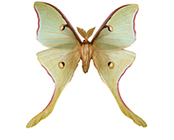
Actias luna
Country of origin USA, 2005
Graphium weskei
Country of origin Indonesia, 2005The Imagos project proposes an interpretation of women as objects of desire, a concept engaging representations of the body, affections, and psychological and social experiences. Woman’s search for her own desire and to be desired is essential to the construction of her identity and the development of personality, which is the condensation of sex and psyche. In ancient Greek, psyche, which referred to both soul and mind, was represented as a butterfly. In this context woman learns from the mystery of her body as a secret and sacred space: female and body are an indissoluble equation. The Imago series addresses the body in terms of object relations, the sexualized woman seen as a collectible item in a culture that objectifies persons and personifies objects.
Focusing on the butterfly as a visual icon and metaphor for woman, the series consists of images of different species of Lepidoptera merged with human female genitalia. Each one of the butterfly photographs is digitally fused with a different woman’s vulva at the center of the wings. Each woman and specimen have the same country of origin. All of the butterflies and women portrayed were photographed in New York City over the course of two years. Throughout the process many conversations and revelations enriched the research of the project and raised issues about the transforming experiences of migration, sexuality, and individuality, and about values as they relate to ethnic diversity and cultural and ideological heritage. In addition, the project explored how each woman preserved the core of her identity regardless of recontextualizing herself within a new environment and country. The series includes a butterfly from Nigeria, which is matched with the genitalia of a Nigerian princess who suffered from female genital mutilation at age seven.
The resulting photographs are a new form of portraiture that reveals and exposes the most private and hidden features while the recognizable physiognomy and identity of each woman remain unidentified. Each Imago is named for the scientific name of the butterfly’s genus. The word imago, which in Latin means an idealized mental image of the other or the self, also refers to an insect in its final adult stage, winged and sexually mature. The images link the natural and corporeal with the sublime and inaccessible, and the presence of the viewer’s voyeuristic gaze plays an important role. These images of female sexual organs metamorphosed into butterflies recall specimens intended for anatomic or scientific study, which the viewer beholds with an intensity free from the moral prejudice of a society in which the most fragile and desirable parts of a woman’s body are fetishized or rendered inaccessible.
"Harrsch began photographing butterflies from many different countries to merge the individual photographs with images of the clitoris of women from the same country as each butterfly. She came to know the heartbreaking history of a Nigerian princess whose clitoris was mutilated as part of an initiation ritual when she was young. In that precise moment, the artist became the sort of voyeur she didn’t want to be, while, for the Nigerian woman, to be photographed was a cathartic experience, offering the ability to free herself from the psychological suffering that led her to confide in the artist—from then on, her clitoris had veritably sprung wings and could fly. These works with female sexual organs turned butterflies became images that the observer, as a voyeur, can analyze free from any prejudice, while the woman herself feels her sex liberated, in a fusion of earth, mother, and nature, taking us on a journey to a primitive time where the body of a woman stops being a sexual fetish and becomes truly free." Extract from El cuerpo abierto. Representaciones extremas de la mujer en el arte contemporáneo, by Irene Ballester Buigues, Editorial Trea, Gij.n, Spain, 2012, page 13. This text also appeared in Curare Espacio Crítico para las Artes, no. 29 (July 2007-July 2008), Mexico City.
The Imagos photographs have been internationally exhibited at museums and galleries as: Matucana 100, Santiago de Chile, Chile 2015, Castrum Peregrini Amsterdam, Netherlands 2012, Artgate Gallery NY, USA 2012, Anversville Contemporary, Antwerpen, Belgium 2011, 8th International Women Art Festival, Aleppo, Syria 2010, White Box, New York, USA 2009, Musée de la Photographie a Charleroi, Belgium in 2008, GE Galería, Monterrey, México 2008, Yeosu Art festival, Yeosu, South Korea 2008, Fieldgate Gallery, London, UK 2007, Galería Leme, São Paulo, Brasil 2007, Alternativaonce Galería, Monterrey, México 2007, Fotofest, Houston, TX, USA 2006, , FORUM, Lésnica Castle, Wrocław, Poland 2006, The Soap Factory, Mineápolis, Minnesota, USA 2006, KBKart Galería,Mexico City, Mexico 2006, 7th Monterrey Biennial, FEMSA, Centro Nacional de las Artes, Monterrey, México 2005, Cervantino International Festival, Guanajuato, KunstHaus Santa Fe, Mexico 2006, Kashya Hildebrand Gallery New York 2006, Mexican Cultural Institute, Washington, DC,USA 2005, Galería de Arte Mexicano,Mexico City, Mexico 2005, UnitB Gallery, Chicago, IL, USA 2005, among others, and have been presented at art fairs in different countries.
The photographs are presented in different size and format, there are 3 limited editions: Imago / from the Object of Desire series
Collection 1- IMAGOS (Flat)
Photographed in 2004-2005, printed in 2006, Edition of 6. C-prints 40 in x 35 in / 100 cm x 90 cm
Collection 2- IMAGOS (Flat)
Photographed in 2004-2005, printed in 2015-2016, Edition of 6. Archival inject pigment 27.5 in x 25 in / 70 cm x 63 cm
Three-dimensional cut-out photographs - IMAGOS (Boxes)
Photographed in 2004-2005, printed in 2005, ongoing, Edition of 6. Giclee prints on archival cotton paper inside of an entomological wooden box.
Print 9 x 9 in. approx. Entomological wooden box. 18 x 16 x 2 3/4 in.
Imago from the Object of Desire-series
Three-dimensional cut-out photograph printed on archival cotton paper and archival pigments. Inside of entomological wooden boxes. Print: 9 x 9 in, approx. Entomological wooden box: 18 x 16 x 2 3/4 in. 2004 - 2007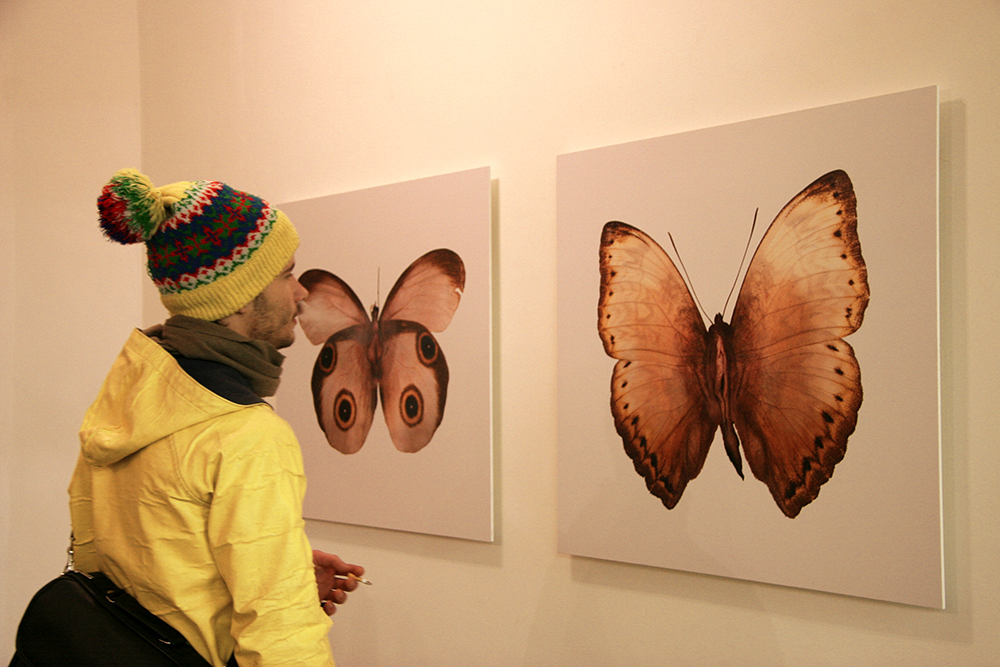
Imagos, C-Prints
Exhibited at Fieldgate gallery, London 2007
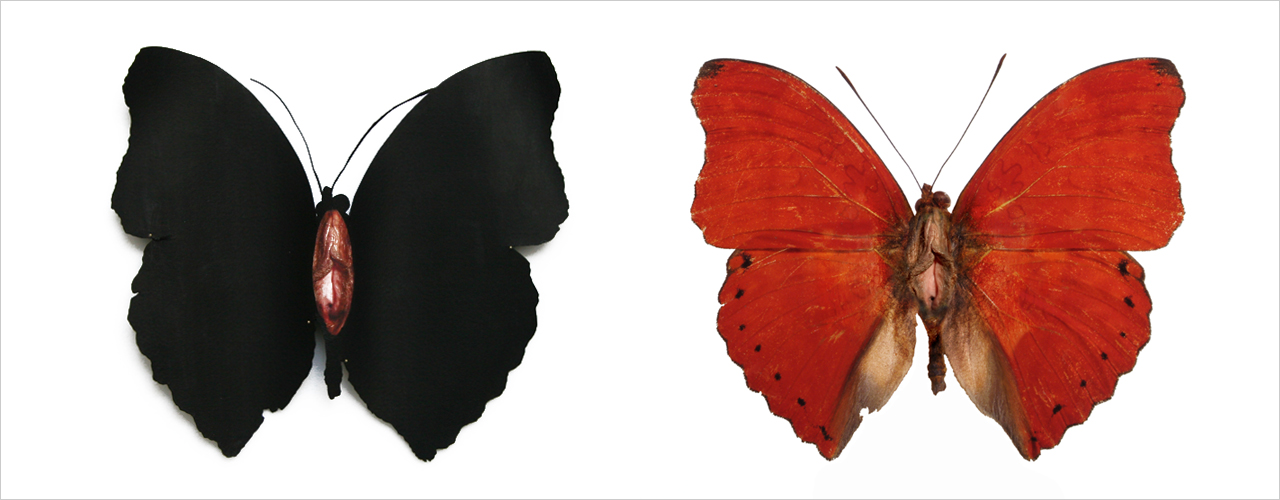 Burka Imago after censorship in Syria
Burka Imago after censorship in Syria
In October 2010, at the 8th International Women's Art Festival in Aleppo, Syria, this work was censored and confiscated, security officials abruptly appeared to take down six of the framed Imago photographs in large format (100 x 90 cms). It took delicate negotiations with authorities and encounters with secret police to secure the safety of the work and myself. All the art was recovered. The 2010 Women's Art Festival was intended as a platform for open dialogue and freedom of expression, to address controversial issues about gender in Syrian society. Paradoxically the extreme reaction against the art and censorship was initiated by a group of women who stated: "We are ashamed of the artwork and have to protect all the women in Aleppo of this embarrassment". I witnessed the repression and atmosphere of fear that Syrian society live in specially women. After the event, Syrian newspapers and blogs showed imgs of the Imago Butterflies. They appeared with red and black round circles along the center, covering the genitalia. During months I kept on receiving insults and threats by email as well as expressions of praise. In response to the events I created the "Burka-Imago" which is an inverse pattern of the black censored ones, leaving exposed what was covered. The Imago series is a collection of twenty photographs of butterflies from different countries which are digitally fused with photographs of female genitalia. Each woman and butterfly fused together match from the same country of origin. This series explores female identity through sexuality and their related values upon ethnic diversity, cultural and ideological heritage. All women and butterflies were photographed in New York, addressing also the reconstitution, adaptability and preservation of identity after migrating. The series include a butterfly from Nigeria, which is matched with the genitalia of a Nigerian princess who suffered from female genital mutilation at age seven.
